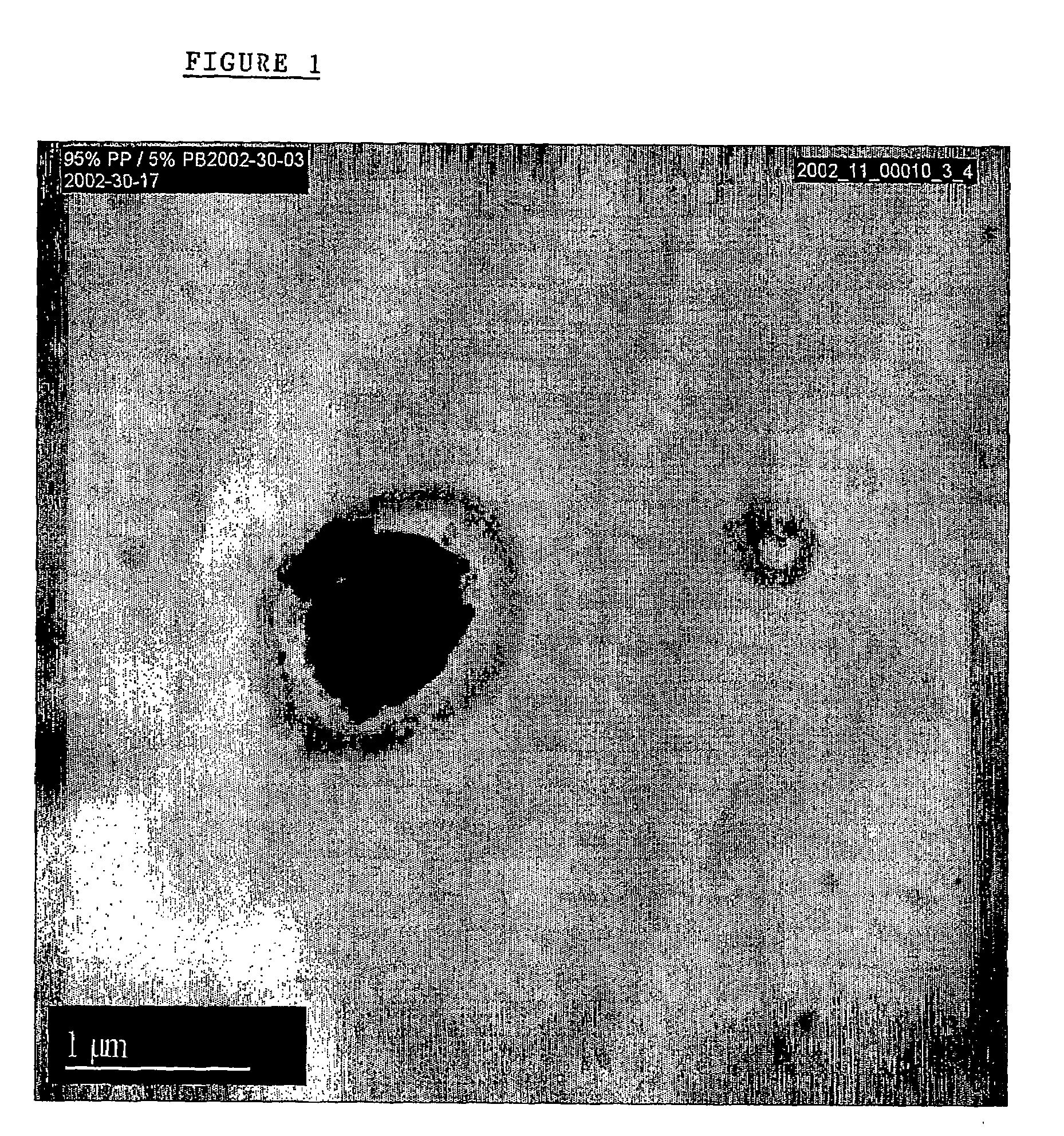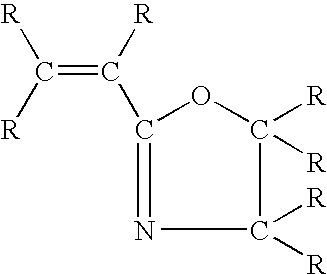Laser light absorbing additive
a technology of additives and lasers, applied in the field of laser light absorbing additives, can solve the problems of poor contrast obtained by laser irradiation, and achieve the effect of better contras
- Summary
- Abstract
- Description
- Claims
- Application Information
AI Technical Summary
Benefits of technology
Problems solved by technology
Method used
Image
Examples
examples i-viii
[0084]Using a twin-screw extruder (ZSK 30 of Werner & Pfleiderer) a number of masterbatches, MB1-MB15, of the additive according to the invention in a third polymer were made. The absorber, first and second polymer used in the additive and the third polymer used and the respective proportions thereof in wt. % are shown in Table 1, as are the absorber content and the size of the formed additive particles in the masterbatch.
[0085]Using a Haake 350 cc kneader with Banbury kneading arms MB 16 and MB 17 were made by mixing MB2 with matrix polymer M7 as a fourth polymer in the quantities given in Table 1, which also shows the size of the formed additive particles in the final master batches M16 and M17.
[0086]The master batches MB1-MB 15 were made with a throughput of 35 kg / h at an extruder speed of 350-400 rpm. The feed zone, barrel and die temperature of the extruder and the outlet temperature of the material are 170, 240, 260 and 287° C., respectively, if polyamide (P1-1) is used as the...
example iii
[0097]Of two master batches, MB2 and MB15, additive particles consisting of the first polymer P1-1 and the absorbers A-1 and A-2, respectively, were separated from the third polymer. For this purpose the masterbatches MB15 and MB2 were dissolved in decalin in an autoclave at 140-145° C. and separated at that temperature by means of centrifuging. The resulting additive particles were distributed in concentrations of 20, 10 and 5 wt. % in an acrylate resin (UVTRONIC® of SICPA), stabilized with Disperbyk® (of BYK). The resulting mixture was applied by offset printing on a polyester support. The compositions with the additive particles obtained from MB2 are referred to as LP42-LP 44, those with the from MB15 as 45-LP 47, the successive compositions containing 20, 10 and 5 wt. % additive particles, respectively.
[0098]The degree to which the different materials are laser writable was determined as in Example II for the wavelengths 355 and 1064 nm and is shown in Table 3, expressed in qual...
PUM
| Property | Measurement | Unit |
|---|---|---|
| wt. % | aaaaa | aaaaa |
| particle size | aaaaa | aaaaa |
| wavelength range | aaaaa | aaaaa |
Abstract
Description
Claims
Application Information
 Login to View More
Login to View More - R&D
- Intellectual Property
- Life Sciences
- Materials
- Tech Scout
- Unparalleled Data Quality
- Higher Quality Content
- 60% Fewer Hallucinations
Browse by: Latest US Patents, China's latest patents, Technical Efficacy Thesaurus, Application Domain, Technology Topic, Popular Technical Reports.
© 2025 PatSnap. All rights reserved.Legal|Privacy policy|Modern Slavery Act Transparency Statement|Sitemap|About US| Contact US: help@patsnap.com


